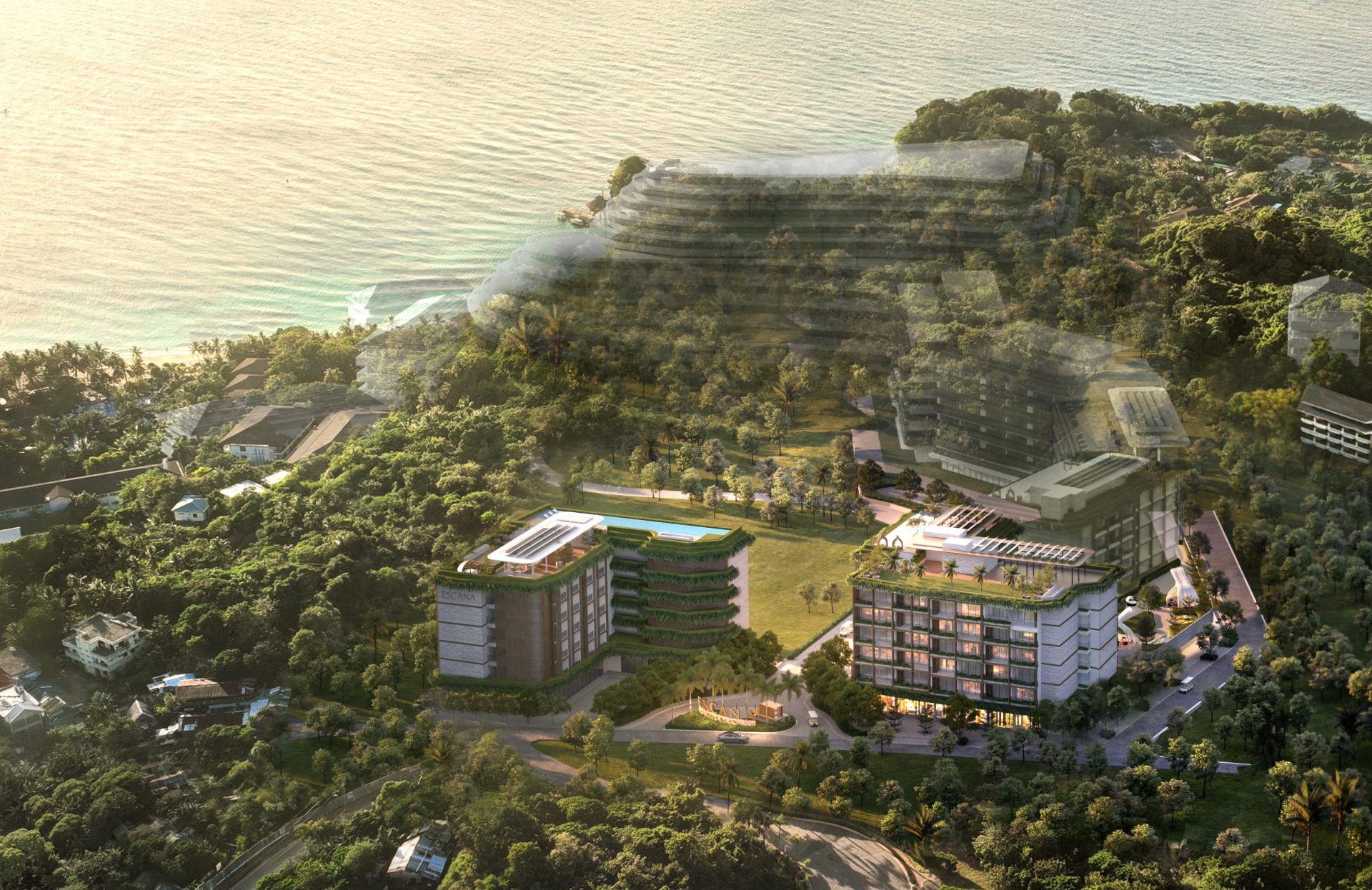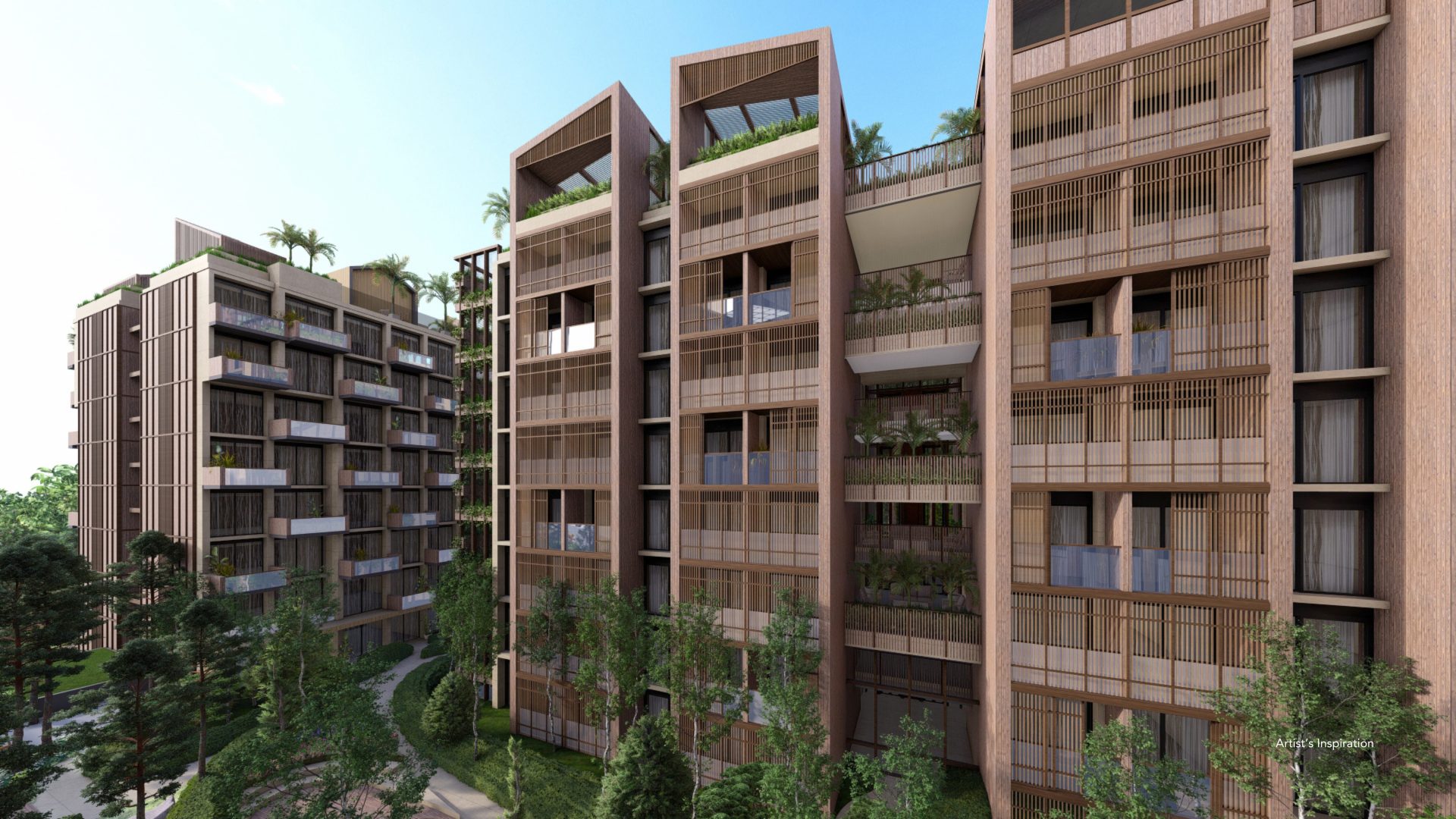BLOGS
Burn Calories With Low-Intensity Fitness Regimens
It’s been nearly half a year into the pandemic and many of us have started living sedentary lifestyles that don’t let us burn calories – at least, not as much as before. Now that we’re constantly stuck at home, it’s hard to find activities that are healthy for our physical bodies.
Not to mention, with the virus still raging and strict travel restrictions still in place, it’s pretty likely that this will go on a little longer. Although it’s certainly relaxing to just lounge in our extraordinary luxury house and lot from time to time, too much inactivity is also bad for our health.
To combat this, it’s important to exercise and burn calories. But which exercise regimen should you pick? After all, the whole industry is saturated with myths, hearsays, and hype.
If you’re just getting started, you can’t go wrong with low-intensity workouts. In this article, we at Brittany will talk about these exercises, what they are, why they’re practical, and how you can get started right now.
Burn Calories: What is Workout Intensity?
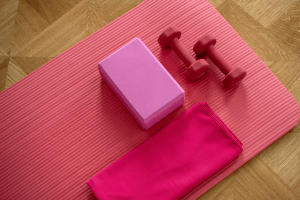
The intensity of an exercise refers to how strenuously your body is working during the activity. Intensity affects how quickly you get tired, how fast you gain muscles, and how fast you burn calories during an exercise. Since everyone’s bodies and preferences are different, the ideal workout intensity will also differ from person to person.
Exercise intensity is usually described as low, moderate, or vigorous. Various sources suggest that the ideal amount of daily physical activity is 30 minutes of moderate exercise – along with a general lifestyle shift towards moving more and sitting less. This message rings true for both men and women.
That, as dangerous inactivity is for your long-term health, too much exercise can also be risky. When working out, individuals with medical conditions are especially advised to attend a pre-exercise screening. This is to assess whether or not the benefits they will gain from the workout outweigh the risks.
Even if you don’t have a pre-existing medical condition, going beyond your ideal workout intensity almost always results in negative results.
Moreover, if you tried any kind of workout before or have been inactive for a long time – like most of us during this lockdown – then even moderate-level exercises may be too much.
How to Measure Workout Intensity to Burn Calories
To assess whether a certain level of exercise is good for you, you need to have a good grasp of your particular workout intensity. You can measure your internal scale through three common means:
● Through your heart rate
● With a talk test
● With a rating scale
Measuring intensity through target heart rate
Your heart is a built-in intensity-measuring system. You may have noticed that your heart beats faster and stronger when you do something physically demanding.
During workouts, your muscles demand more nutrients and oxygen to allow you to perform strenuous tasks, so the heart tries to cater to that demand. The more robust your heart beats, the more oxygen, and nutrients are pumped to the muscles for them to burn. Thus, the faster you tend to get tired.
You can use your heartbeats as a means of measuring workout intensity with the concept of a Target Heart Rate range (THR range). The current convention is that moderate-intensity should be around 50% to 70% of the individual’s maximum heart rate.
Your maximum heart rate can be estimated based on your age. To assess, subtract 220 by your age. For example, the estimated maximum heart rate for a 50-year-old individual would be 170 bpm (beats per minute) because 220 – 50 = 170. These are only very rough estimates, though, so take caution when using them.
The target heart rate per intensity scale should be as follows:
● For low-intensity exercise: resting heart rate to 63% of max heart rate.
● For moderately intense exercise: 64% to 76% of max heart rate.
● For vigorously intense exercise: 77% to 93% of max heart rate.
An easier way of monitoring your heart rate is through a heart rate monitor. You can also get your heart rates taken by your doctor.
Measuring exercise intensity using the talk test
The talk test is kind of a simple rule of thumb in measuring exercise intensity.
● You should be able to talk and sing with no problems during low-intensity exercise.
● If you can talk okay, but can’t sing, then you’re doing moderate-intensity exercise.
● If you can’t talk properly at all without gasping, you’re doing vigorously intense exercise.
Measuring exercise intensity using the RPE
The exertion rating scale is another way of measuring how hard your body is working through preset measurements. These measurements are composed of the extreme anchors that begin with “no exertion at all” and end with “maximal exertion.”
Everything in between is composed of common signs of physical exertion, including heart rate, breathing rate, increased sweating, etc.
Moderate intensity exercises usually elicit:
● Perspiration
● Fast heart rate
● Increased temperature
●Faster and deeper breathing
● Mild pains in muscles that you’re not used to moving
Anything below that can be considered low-intensity workouts.
Burn Calories: Why Low-Intensity Workouts?
We now have a good idea of what workout intensity is and how we can measure it. We know that the more complex your body works, the more you burn calories. So why are we advocating for low-intensity workouts over moderate ones?
In this section, we’ll discuss the benefits of low-intensity workouts.
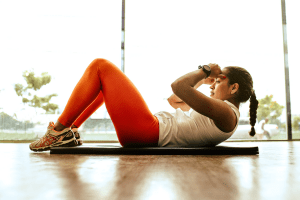
Accessibility
The first benefit of low-intensity workouts over moderate ones is the ease of access.
Although moderate-intensity exercises are not the most exhausting ones out there, they still presents a significant barrier of entry to unfit people. Moreover, obese individuals with disabilities and chronic pains and the elderly have a higher likelihood of getting injured with moderate-intensity workouts, especially if they don’t have any background.
Low-intensity workouts are easy to do. They are light on the body and unintimidating, even for complete beginners. This way, low-intensity exercises are much easier to start.
Compliance
High-intensity exercises have a lower compliance rate compared to low-intensity ones. Practices which border on physical discomfort are not fun to do and can only be done through high levels of determination and concentration.
In other words, if you don’t have a deep motivation to work out and burn calories, you will most likely drop out after a couple of days if doing moderate or intense exercises.
On the other hand, since low-intensity exercises are easier to perform, it’s not a problem to keep them up. Because these kinds of activities can be shared across various physical capabilities and preferences, they can be fun to do with friends and family.
These factors make the average person more likely to keep up with your exercise regimen than moderate-intensity workouts.
Effectivity
Even if low-intensity workouts are not as strenuous, they can burn calories just as well as moderate-intensity workouts. The trade-off is that it can take longer to do so compared to moderate or vigorous-intensity exercises. Perfect for people with time to spare.
Aside from burning calories, low-intensity exercises also help build muscular endurance. High-intensity activities develop strength; repetitive, low-resistance, and long-duration actions – such as pedal strokes or steps – tone the muscle for endurance.
Lastly, low-intensity workouts also improve appetite. Compared to strenuous, short-duration exercises that trigger hunger hormones, low-intensity workouts blunt the appetite, especially in women.
Fitness doesn’t have to be all-or-nothing. You can achieve the beneficial effects and not put undue strain on your body at the same time.
Because of these three factors, now we know that low-intensity workouts can burn calories and help you become healthier just as much as intense workouts.
Low-Intensity Fitness Regimen to Burn Calories
In this section, we’re going to teach you specific low-intensity exercises that you can do even while stuck in your luxury home.
1. Walking Burns Calories

The easiest of all exercises, walking is an effective low-intensity workout. Without the significant joint impact and strain produced by running, walking is almost a pleasure to do, especially if you are enjoying nature at the same time.
More than that, walking is a workout that can fit easily into your daily routine. You can go on a short walk during break times, or stroll in peace at your exclusive luxury community. You can easily control the pace and intensity of your walks and can even modify it by simply adding weights.
Planning Low-Intensity Walking Sessions to Easily Burn Calories
There’s not much to plan at all if you’re a relatively healthy person who just wants to move more. However, careful planning will have to be undertaken for walking sessions involving the obese, the elderly, and those with disabilities.
If you, or someone you know, belongs to those categories, then here’s a checklist of things to prepare.
● Plan a route that you can go to and get back from safely. If using a treadmill, plan a session that you can safely disengage from with no problems.
● If going outside, make sure other people know where you’re going, and you have the means to contact them.
● When possible, connect to a smartwatch or Fitbit or any smart appliance that will quickly contact trusted numbers in case of emergencies.
2. Water Workout
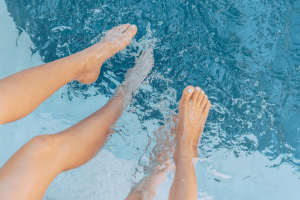
Time to clean out your luxury home’s pool and bust out those swimsuits! Swimming pools are not just fun and relaxing; they can be a great way to exercise.
Water supports up to 85% of our body weight, making it easy on our joints. At the same time, movements in water also burn more calories as you need to work just a little bit harder, burning about 200 calories in half an hour on average. Being in the water also helps improve your circulation, and it’s much more fun than your average treadmill session!
There’s a wide variety of choices, from water aerobics to underwater treadmills. In this section, we’re going to show you how to do underwater arm curls.
Underwater Arm Curls Burn Calories
An excellent example of an accessible, low-intensity water workout is underwater arm curls. In this exercise, you’re going to work against the resistance of the water to strengthen your arm muscles. You can marginally increase the intensity by moving faster, as well. The depth of the water should be enough so that you can stand with your knees slightly bent and your shoulders partially submerged.
Do 20 reps for 1 set. To do underwater arm curls, follow the steps below.
1. While on the water, stand with your feet far apart to partially submerge your shoulders.
2. Raise your elbows to shoulder level, forming a T with your body.
3. Still with raised elbows, make sure your palms meet at your midpoint with your fingers touching and palms facing your chest.
4. Extend your arms out to the sides, tightening your muscles. By the end of the movement, your arms must be parallel to the floor, and your palms face outwards.
5. Close your arms back to the T-position. This is 1 rep.
3. Yoga
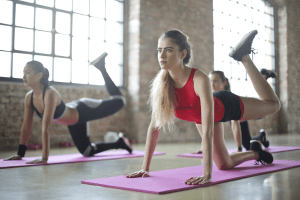
Need something that will help clear your mind, relax your body, and even burn calories? Yoga is the way to go.
Yoga is an ancient art that has since been adapted into a practical discipline for physical exercise. Yoga develops strength, muscle tone, and flexibility. The slow and meditative nature of the activities even helps relieve stress!
This type of low-intensity workout consists of several deep-breathing exercises and yoga poses performed in a set amount of time. There are various yoga positions for entire muscle groups, so yoga is good for the whole body. It can also be performed in one place, so it’s the perfect workout to do in your luxury house and lot during the lockdown season.
You can also increase the difficulty and intensity quickly; simply adopt more demanding poses as you master old ones. For this, you would need a class and an instructor to reap the maximum benefits. There are many different kinds of yoga, from Power Yoga to yoga that deals with chair exercises.
The Yoga Chair Pose Can Burn Calories
The chair pose, also called Utkatasana, is one of the beginner-friendly moves of the discipline.
1. To begin, stand with both your feet close together, but not enough to touch
2. Lift both arms straight, over your head, and your palms facing each other.
3. Exhale as you bend your knees and bring your tailbone to the floor.
4. Try to form a right angle with your torso and the tops of your thighs.
5. Hold the position for an increasing amount of time, starting with 1 minute.
Burn calories with a low-intensity fitness regimen
Low intensity, low-impact workouts are some of the best solutions that we have to become healthier within the confines of our luxury homes.
Here at Brittany, we value the physical well-being of our residents and thus do our best to provide the best amenities possible, including gyms and activity areas. However, due to the restrictions, those spaces are seeing limited use, if at all, which is why it’s so important to be more physically active, even just within our luxury houses in the Philippines.
We hope that Brittany has pointed the way to a healthier, more beautiful life through this article.
Brittany offers the finest luxury house and lots for sale in the Philippines. If you’re in search of your next luxury home, be sure to get in touch with Brittany today. You can also follow Brittany’s Facebook, LinkedIn for the latest updates.



